When I explained on the page dedicated to my photos that I had kept only my memories of my first explorations, I came across, precisely, a picture of one of these places. Immediately, I had to share these memories with you. So back to the early 90's.
Internet was still completely unknown in Belgium, the young people of the time knew how to speak, read and write, you could walk after
8pm without risk, the telephone was only used to telephone (and wasn't an extension of the human body) and No Limit from 2 Unlimited was
a radio hit. In short, a gloomy epoch that it's better to forget. Sigh...
Doing nothing like everyone else (yes, already at the time !), I convinced my friend Laurent to accompany me to places that nobody visited,
for the good reason that these places were totally forgotten. I don’t know why I’ve always had this overwhelming attraction. Perhaps for the
calm that reigns there or for the chance to meet no one there. I don't actually know. But the fact remains that my passion for urban exploration
really began at the start of the last decade of the 20th century. Damn, it gives me a blow of old this story...
Let's go for a little description of these few places.
- Château de Roisin
- Grand Hôtel Majestic & the Kursaal
- The well of the cave
- Sewers
- Masurel Factory
- Château Allart
- Château des Comtes
- Monastery of Notre-Dame-des-Anges
- Château de la Royère
- De Pottelberg
- A villa
- Collège de la Salle
- Stade de la Drève de Maire
Château de Roisin
Well... This one dates back to well before the 90's.
I cannot say that I visited it but when I was eight, I was absolutely fascinated by this gigantic castle falling into ruins. Being able to see
through the gutted windows a completely ravaged and partially collapsed interior, I had only one desire : enter and play adventurer.
Obviously, I was forbidden to came in but this castle is for me the starting point of my passion for forgotten places.
The castle was scandalously destroyed in the early 90's and replaced by... a gravel parking lot.
Pathetic...

The Château de Roisin a few years before its destruction
This beautiful castle is mentioned on the page dedicated to the Haut-Pays, visited in 2009.
Grand Hôtel Majestic & the Kursaal
These too, I could only admire from the outside.
In the second half of the 80's, we had a caravan at the Belgian Coast. Well yes, what do you want. These are definitely my fondest
childhood memories. And this caravan was located very close to Blankenberge. When we weren't at the beach, or me with my buddies
from the camp doing anything and everything, we were in this famous seaside town.

The Grand Hôtel Majestic (in the center of the photo) and the Kursaal (on the left) during the 60’s.
Kust Erfgoed
The long dyke had already been massacred a long time ago by the concrete bunkers, however there remained several witnesses of the
Belle Époque still more or less intact : the famous Pier, the hotels Bristol, Idéal, Petit Rouge, Pauwels-D' Hondt (with its giant
luna-park Sportland) but above all the Grand Hôtel Majestic and its neighbor the Casino (or Kursaal).
The first was already abandoned in the 80's, an abandonment caused by the fall of part of the facade of the right wing (the oldest)
at the end of the 70's. The 3 upper floors were demolished, while the rest of the wing was left as is. This part of the hotel was
surrounded by a fence to prevent falling materials, while the left wing still seemed in “good” condition. This huge hotel fascinated
me and I wondered what was inside. I never knew. It will be demolished in total indifference at the very beginning of the 90's.

The rear facade of the Grand Hôtel Majestic , during the 70’s.
At the end of the building's existence, only the ground floor will still be occupied by a restaurant.
Kust Erfgoed

The Grand Hôtel Majestic , around 1975.
Kust Erfgoed

At the end of the 70’s, part of the facade collapsed (top right).
Kust Erfgoed

For more than a decade, this hotel which was synonymous with luxury and refinement will offer this pitiful face.
Kust Erfgoed
As for the Kursaal, its huge belfry was truly impressive, almost scary. He too was surrounded by a protective fence, the green
earthenware composing his facade unhooking. The casino was not abandoned but it was in such a state of disrepair that we could easily imagine.
As for the interior of the casino, I saw the gigantic, still empty hall on the side of the Casinostraat. In this hall, there were
beautiful Art-Deco light fixtures. If the casino wasn't demolished like the other buildings mentioned above, it was nevertheless totally
denatured by a disrespectful renovation in the early 90's. Its decoration and everything that made it a unique building have been erased.
Nowadays, we only have to “admire” yet another soulless concrete cube. As for the rest of the seawall , no comment. There is nothing to
watch there anymore.
However, I returned there four
times at the beginning of the adventure of this website, and even a visit in the snow.

The Kursaal, just before the facade problems.
As early as 1975, there was talk of a demolition, which fortunately never took place.
Kust Erfgoed

The Kursaal, surrounded by its steel cage, in the late 70's.
The future renovation will disfigure it irreparably.
Kust Erfgoed
After his few childhood memories that laid the groundwork for my passion for abandoned places, make way for the first real explorations.
The well of the cave
My very first attempt at urban exploration, what's more in Mouscron, at the dawn of the nineties.
Until the end of the 2000's, one could find a pleasant little wooded park in the city center. Named Parc du Bois de Boulogne,
it once adjoined the remains of a large spinning mill created at the beginning of the 19th century and disappeared in 1910 (the
Graveline & Dubiez factory), the "le Paris" cinema and a few bourgeois neoclassical-style homes.
The first demolitions would arrive in 1975, seeing the disappearance of the workshops on the street front and the factory owner's
house. The remaining buildings would be gradually abandoned and demolished until 2008.
Before that, nestled in a corner of the park and behind the old ASLK-CGER bank, there was a strange false cave. This type of cave
was fashionable at the end of the 19th century and most often had a religious vocation. In the case that concerns us here, none of
that. If one could easily access the inside of the cave, it also contained a passage closed by a solid gate, and behind it, one
could distinguish a well. Where it descended and to what depth, I will never know. However, having tried by all means to access it,
I never succeeded. Adjoining the cave, an old industrial building made of half-collapsed bricks.
This strange cave disappeared with the last remains of the old buildings in 2008, the park suffered the same fate. The entire
neighborhood will be replaced by magnificent apartment buildings and a new "park" above an underground car park.
A whole part of local history has definitively disappeared in general indifference.
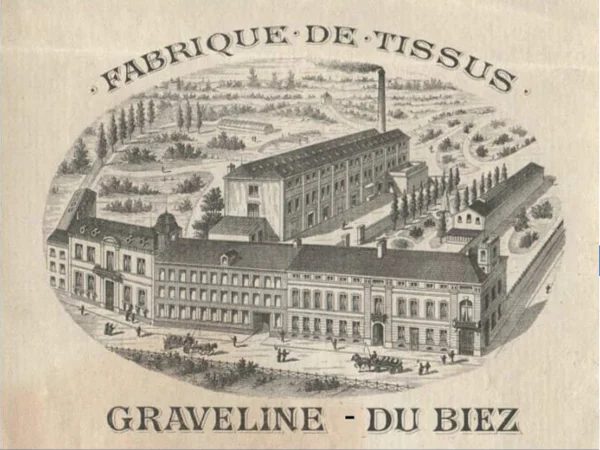
The site in the 19th century.
The park will be located to the left of the large building in the center of the image.
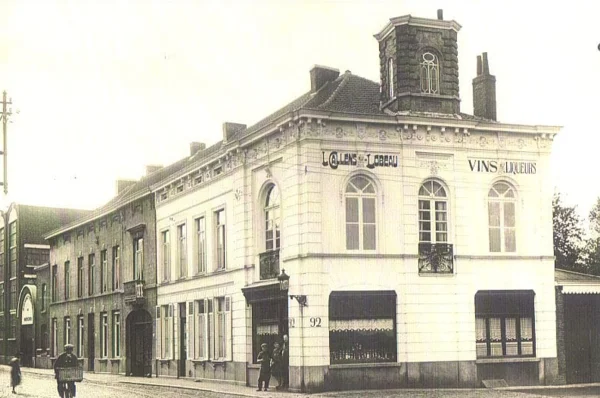
The same site, rue de Tourcoing, in the first half of the 20th century.
The darker building will house the “Unic” supermarket for several decades, the white one a household appliance store and a bakery.
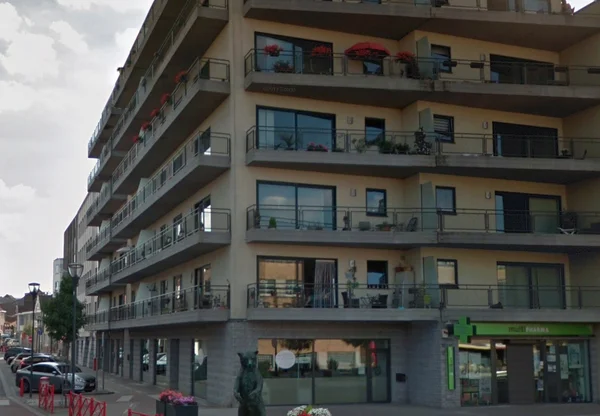
Same angle of view today.
No comment...
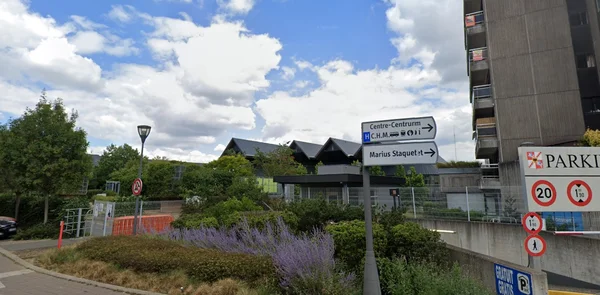
The old Parc du Bois de Boulogne today.
The cave was located behind the building on the right of the image.
Sewers
Sometime before I started exploring abandoned buildings, I had dabbled in exploring sewers. What a strange idea for a 13 year old kid, isn't it ?
But this wasn't just any sewer : it was right in the middle of the Mouscron countryside and seemed to be of no use, and its manholes didn't have
any closures. It was also often dry (but not without grime). With a friend of the time, we explored it several times trying to go as far as
possible until daylight and we spread out in the s*** and we had to go home to wash ourselves while crossing the city covered with a smelly
material from head-to-toe
This comic episode persuaded me to explore abandoned buildings instead, a much "cleaner" activity.
A few years later, a new road and an industrial zone will take the place of the countryside. The sewer will then find its use.

One of the entrances in 2019, closed for ages
Masurel Factory
Here is an old large textile factory as there were dozens in Mouscron.
Closing one after the other, some were fortunate to be converted while the others were already ancient history in 1992. This is the case
of the Masurel Factory.
If the textile activity was stopped in 1969, the buildings experienced several reallocations until the opening of a furniture store in 1977.
In 1990, an "accidental" fire ravaged the sheds (that is to say, the majority of the site) but spares the administrative buildings and a large
warehouse at the ends of the site.
Like Indiana Jones, we had fun entering the site in the most discreet way possible, putting together plans the crappy ones each other. And once
inside, we set out to explore the buildings as much as possible. Obviously, when you’re 14, you don’t think about the risks. Creaky floors or
walkways overlooking the void ? Let's go for it ! Come to think of it, we were very lucky at the time !
It was at the corner of a corridor that we came across a large room completely covered with earthenware. If the exteriors of the factory were
poor, this room would certainly have been immortalized. Unfortunately, Mouscron never took care of its heritage and the entire factory was
demolished in 1997. In 2020, only a historic factory still remains but its death is already scheduled.

The Masurel Factory in 1988


The Masurel factory after the fire.
We will regularly visit the buildings visible in the background.
Château Allart
I have known this little castle for ages. It was only while writing this that I discovered his real name. We really learn every day.
Perhaps the most difficult exploration.
A first manor was built in 1800. Passing from hand to hand, it underwent several transformations and enlargements, the last in 1910.
Abandoned in 1962 upon the death of its owner, there was nevertheless no way to enter it. Trying it several times, we finally
found access. Once inside, we were speechless ! Everything was still there, right down to the perfume bottles in the bathroom. The central
room, circular in plan, was truly magnificent !
This place was so well preserved inside (the outside was completely devastated) that we wondered if it was really abandoned. Obviously,
it was. But this place had a scary side and we never went back there again.
In the early 2000's, its rescue began. The little castle was saved, I was happy with it.

Château Allart, after 1910 and its enlargement

The rear facade of the castle
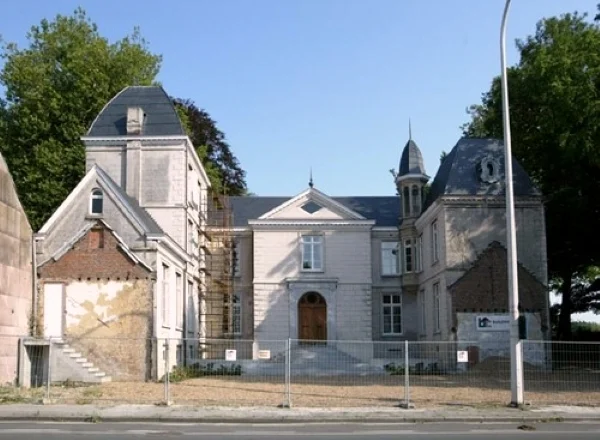
In 2003, during its renovation
Château des Comtes
Originating in the 15th century, this proud castle has had a very eventful history.
Abandoned but restored externally in the 70's, the old manor will be the city's great forgotten for two decades. Even the locals
didn't care and only a few enthusiasts wanted to defend it. On the barbed wire closing the access to the site sat a poster indicating
"Castle to save".
The 18th century barns had either been demolished or had their roofs removed. Needless to say, the buildings suffered a lot. As for the
castle, if the facade looked great, the interior, on the other hand, had been vandalized in a fairly violent manner. Stucco decorations,
only a few vestiges remained. No more ceilings, no more floors, just the main beams that kept the walls standing. We were having fun walking
on these beams, 5 or 6 meters above the ground. Fear is unknown at 15 years old.
We are also doing everything we can to hinder access to our favorite castle. Thus, we collect as much wood as possible to mount reinforcements
against the doors and window shutters. We had our secret access and there was no question of intruders coming to take our loot.
Alas, in 1995, assholes managed to enter and set fire to it. All the roof framework disappeared and a catastrophic reconstruction took
place. Since then, the castle has been in a lack of stability and brackets have been placed to prevent any collapse. As for the barns, they have
been modernized (in other words massacred) and extended by a magnificent concrete building. It’s modern so it’s beautiful. And if you think
differently, you're just a jerk !

The Château des Comtes at its peak.

The consequences of the 1995 fire.
A badly done reconstruction will follow which will undermine the stability of the gable on the right.

The same castle, or rather what's left of it...
The support props needed to keep the castle upright.
Monastery of Notre-Dame-des-Anges
A place that has totally fallen into oblivion since its demolition in the mid-1990's. Located next to the former Néchin station, the
monastery (later converted into a boarding school) had already been greatly amputated during our visit. For a long time, only the huge
ruined chapel remained. From everywhere, you could only see it, was so imposing.
An exploration that had totally come out of my head. It must be said that we had only visited it once and the only tangible memory I could
keep of it was a nice tear on a jacket that I particularly liked.
This tear had been caused by the terrible state of the chapel. If the facades were still intact, the roof and floors were in ruins.
Nevertheless, inside, the majesty of the place had remained whole.
Unfortunately, the demolition took place shortly after our visit and only the staircase turret will remain standing for a few more months.
Since then, nothing. There are still some annex buildings on the street front, but the land formerly occupied by the monastery and its grandiose
chapel have remained untouched by any new construction.

The vast chapel visible on the right.
The rest of the complex had already been demolished a long time ago.

The entrance to the monastery, located Rue de la Station.
The long building in the background still exists.
Funny detail : the location of the chapel is still represented on Google Maps™, almost 30 years after its demolition.
Château de la Royère
Two attempts will have been made for this very old fortress totally forgotten at the time. But the old fortress will never open its
doors to us.
Spotted from the time when I cycled through my region from side to side, always with Laurent, we thought that after the Château des Comtes,
it was time to explore a “new” testimony to the Middle Ages. Still surrounded by its moat, the castle was almost indistinguishable so much
it was drowned in the vegetation and lost in the middle of nowhere.
Our first attempt was stopped short by a solid iron gate (the only solid thing in this castle by the way !) and a big padlock. Later,
we managed to locate the owner (who lived a few hundred meters away), but the latter didn't allow us to enter the castle, claiming that
it was dangerous. At the time, we complained a lot, but with hindsight, the owner's refusal was a wise decision, the ruin was so degraded
and unstable.
Fortunately, since then, the site has come out of oblivion and has finally been maintained, conservatory work is still in progress to try
to restore some luster to this precious witness of the past.

The Château de la Royère in 1810 by Jan Baptiste de Jonghe.
Since then, the state of the ruins has deteriorated sharply and there is almost nothing left of the fortress.

The Château de la Royère today : in poor condition but being saved.
De Pottelberg
Like a few other places featured, we didn’t just explore in Mouscron. Thus, the former De Pottelberg tile factory located
in Kortrijk caught our eye during a countless bike ride with Laurent. We therefore discover an immense brick building
pierced with an innumerable number of small windows. That was all it took to intrigue us and we tried to enter the site.
Unfortunately, for us, the renovation work had already started several years ago and the visit was therefore impossible.
Industrial activity ceased in 1988 and production was relocated to Aalbeke, just a few kilometers away, in the same village where
Château Allard is located.
The site was thus transformed into a shopping center but the majority of the buildings were preserved and refurbished.
A fine example of industrial reconversion while retaining the soul of the place.

The tile factory just before the renovation work, in 1990.
Agentschap Onroerend Erfgoed

The site today, converted into a shopping center.
Agentschap Onroerend Erfgoed
A villa
At the beginning of the 90’s, a beautiful villa at the corner of rue du Bilemont and rue du Midi partly collapsed
due to the instability of the terrain. As it was close to my house, I obviously took the opportunity to venture there.
Alas, the building was really too unstable and I did not enter it. The villa was demolished a few weeks later. For more
than 20 years, the low walls delimiting the plot and the garage remained as they were, while the land had been reclaimed by nature.
This little corner of greenery did not hurt in a hyper-urbanized city.
But of course, the land was acquired by a real estate developer and a new wart was built there.

A wooded area in place of the old villa

Since then, we can admire this thing...
Collège de la Salle
My penultimate exploration of my "pre-urbex" period, this one going back to 1998.
The Collège de la Salle is a huge site built in 1907 and abandoned in 1985. A first fire damaged the building around 1995 but it can still
be visited. This single visit will be expeditious and I was content to visit only the central wing. Why ? I don't know anymore.
Later, a new fire of a much larger scale destroyed the entire interior as well as the roofs in 2003, only the chapel having survived.
Since then, the building has been acquired by several crooked real estate developers and each time, work has begun before being arrested by the
courts (fraud, illegal workers, failure to respect plans, etc.). The building now has a pathetic face.
What is its future ? No one knows.

The Collège de la Salle at the time of its splendor

The condition of the building today...
Stade de la Drève de Maire
To finish this evocation, my very last visit before forgetting urban exploration for a while.
During my higher education in Tournai, the city's two football clubs (the Royal Racing Club Tournaisien and the Royale Union Sportive
Tournaisienne) decided to merge to form the Royal Football Club Tournai, and for the new club a brand-new stadium was built.
Consequently, the two stadiums of the old clubs were abandoned and I was able to visit one of the two, in 2002 or 2003. Unfortunately,
digital cameras were still a rare commodity at the time, I couldn't immortalize my foray into this old abandoned stadium. I asked a
colleague at the school for an digital camera, but I never got it.
The Racing stadium will be demolished in 2003 and replaced by a fire station. The Union stadium will also be destroyed and replaced
by an extension of the city hospital.

A typical old stadium with 10,000 places

A stadium which has enjoyed Division 1 honors
Stéphane Nef

The fusion will not be successful and the new stadium will only accommodate a few supporters...
Stéphane Nef
That's all for these evocations of my earliest memories of urban exploration.
It will take me some time to rediscover the urbex, first through the Internet in 2004, when I stumbled upon photos of Buffalo Central
Station on the Infiltration.org website. And finally, at the end of this same decade by pushing back the wastelands with the visit
of the Giot Foundry in 2009 and the Asile 666 in 2011.

Visit Foundry Giot

Visit Asylum 666
Soyez le premier & devenez quelqu’un de bien • Be the first & become a good person